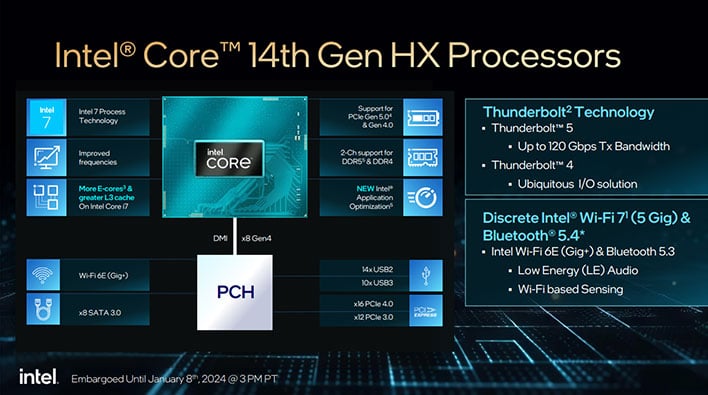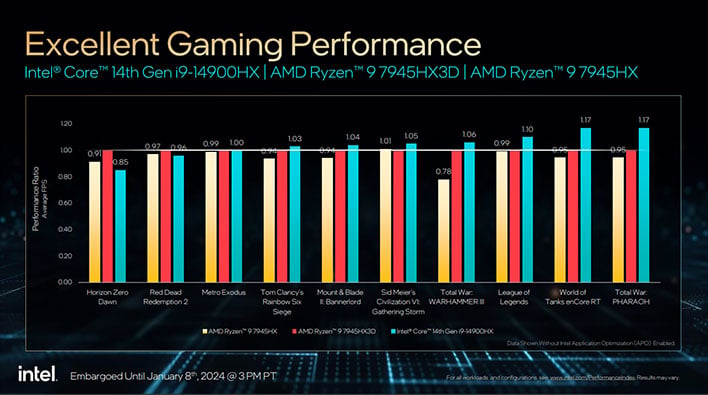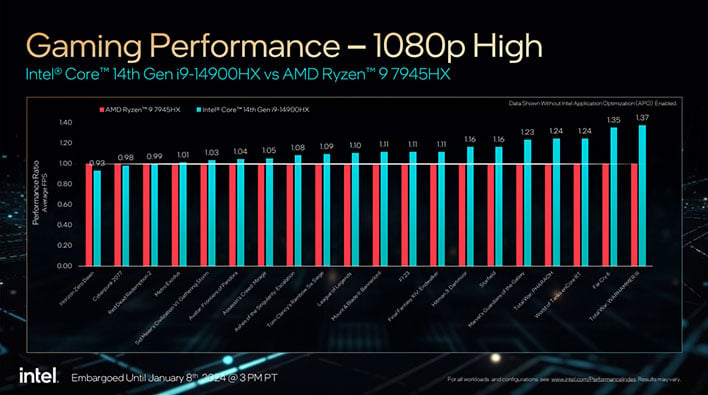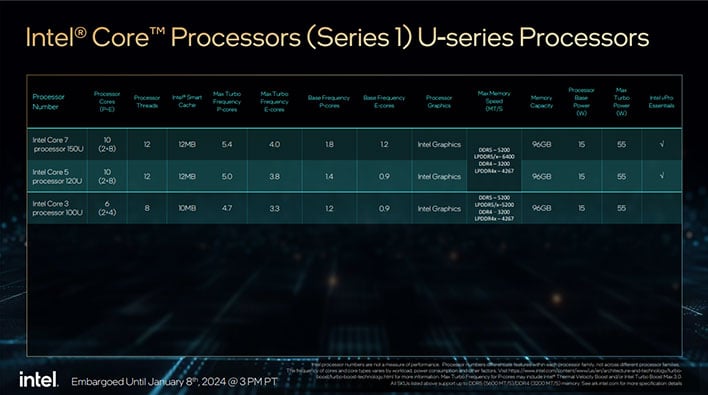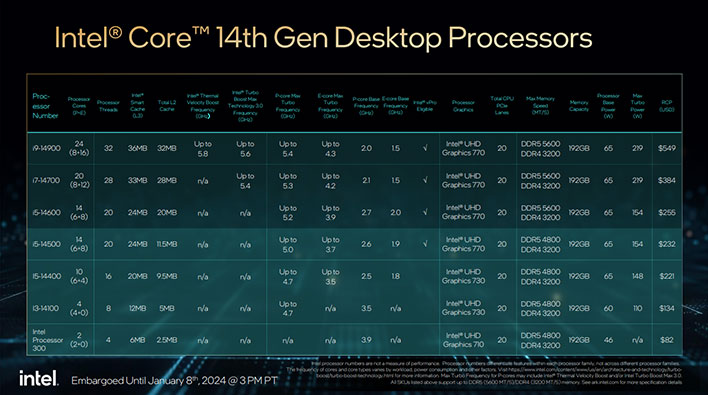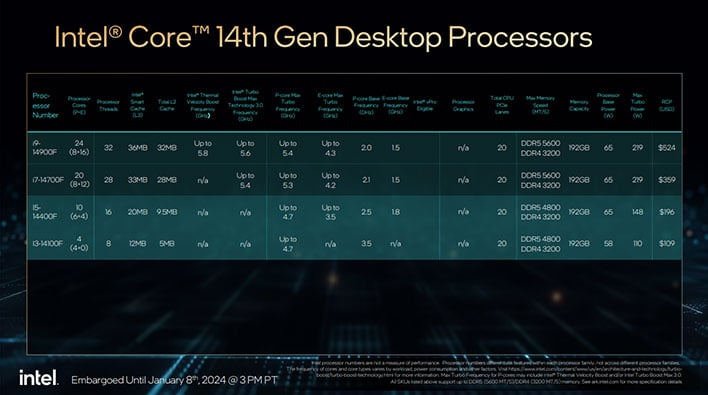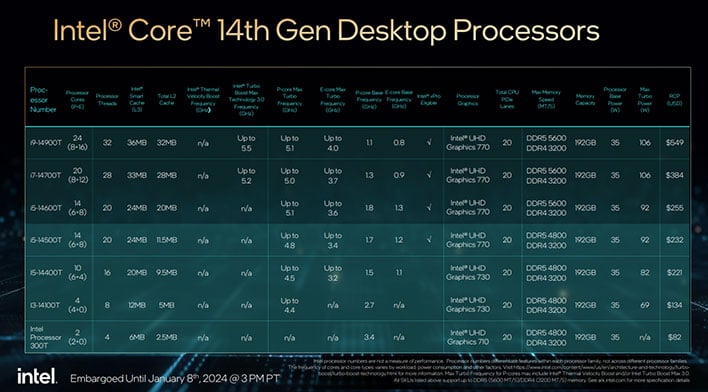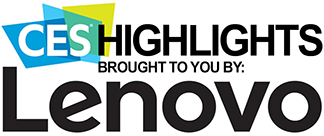Intel Unveils 14th Gen HX And Core 1 U Mobile CPUs And New, Low Power Desktop Processors
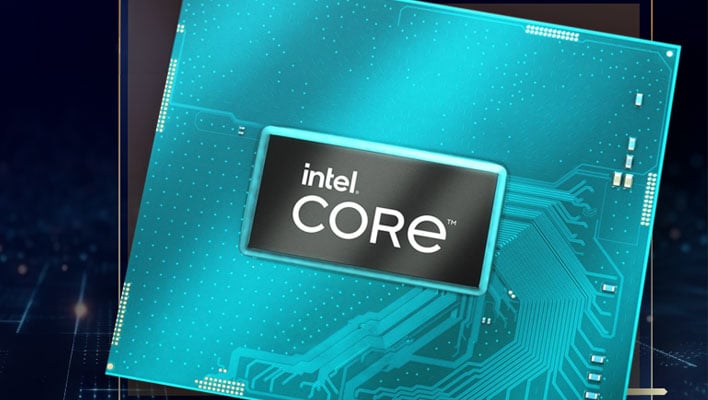
We'll start with that, since it's a good jumping-off point, and also the focus of most of Intel's own announcements today. The Intel Core 14th Gen HX Processors are, just like the previous generations, essentially the desktop "S" silicon adapted for mobile use. AMD does the same thing, of course; "Dragon Range" is really just Raphael under a harsh power limit.
The same thing is true here—the Core i9-14900HX is basically a desktop Core i9-14900K with a nominal 55W power limit and a max turbo power of 157W. You get eight Raptor Cove performance cores, 16 Gracemont efficient cores, and 32 total threads. The maximum turbo frequency is a little lower at "just" 5.8 GHz on the P-cores, but otherwise this part is identical to the desktop version.
Intel goes to some lengths comparing the Core i9-14900HX against the Ryzen 9 7945HX. In some of the slides the company also compares its new baby against the 3D V-Cache-equipped Ryzen 9 7945HX3D, but only some. Intel's benchmarks show its product handily defeating the 16-core AMD processors across a wide range of productivity and gaming tests; in particular, Intel's own benchmarks put the Core i9-14900HX between 15% behind and 17% ahead of the Ryzen 9 7945HX3D in popular games.
Interestingly, Intel also goes so far as to specifically claim superior frame-time consistency, comparing 99th-percentile FPS results across a number of titles, mostly eSports. This is actually the same metric that we often use for our worst-case frametimes, represented as "1% low"; normally the 99th percentile would be the top 1% of frames, but Intel does specifically note that it means low framerates.
For productivity tests, Intel claims that its new CPU is between 3% and 51% faster than a Ryzen 9 7945HX, with the smallest gains in the synthetic UL Procyon benchmark, while the biggest win comes in an Unreal Engine 5 multitasking production workflow test. Intel actually demoed a version of that test live for us; you can see a video of it embedded at the bottom of this post.
Of course, the Core i9-14900HX isn't the only "HX" processor that Intel is launching. There's a whole family of them ranging from the curiously-named Core i5-14450HX all the way up to the aforementioned i9. You can see the full specifications of each model in the chart below:
If you're not a "desktop CPU in mobile form" kind of person, Intel's still got you covered. The company is also revealing its "Core Mobile Processors Series 1," which are the first set of "non-Ultra" Core processors meant for laptops. Put simply, they're 14th-gen Core by another name. These monolithic CPUs are designed for extremely thin and light devices as well as entry-level machines, so they only sport between six and ten CPU cores.
P-Core frequency on the fastest of these chips, the Core 7 150U, tops out at 5.4 GHz; that's not bad, but the 15W TDP will probably prevent these chips from spending a lot of time near the top of their boost curves. Base frequencies are more realistic: 1.8 GHz P-core and 1.2 GHz E-core on the 150U, while the Core 3 100U only guarantees 1.2 GHZ on the P-cores and 900 MHz on the E-cores. Been a long time since I reported on a CPU with a sub-1 GHz clock speed spec, even as a base value.
Intel Core 14th Generation Mainstream Desktop CPUs
Did you think that the 14th-generation desktop CPUs would start and end with the high-end "K" models? So did we. All of us were mistaken, though, as today Intel is launching a full set of 35W and 65W CPUs for the LGA 1700 socket. To the surprise of no one in particular, peak clock rates on these chips are considerably lower than on the unlocked K models thanks to the lack of Turbo Boost Max on all but the top two SKUs, and the restriction of Thermal Velocity Boost to the top Core i9-14900.Starting with the standard 65W parts, we range from an 8P+16e behemoth in the Core i9-14900 all the way down to a two-core four-thread CPU in the Intel Processor 300. That part isn't even based on Raptor Lake silicon, but rather the older Alder Lake design. In fact, the Core i3-14100, the Core i5-14400, and the Core i5-14500 are all based on the Alder Lake silicon. We can tell that because of the reduced L2 cache per core. That makes the Core i5-14600 a considerable upgrade over the Core i5-14500, at least in gaming performance.
If you don't need integrated graphics, these "F" SKUs offer the same capabilities as their equivalent 65W models above, just without the built-in GPU. No need to pore over the product charts; every specification aside from the suggested pricing is identical (we checked.)
Finally, the "T" processors come in with 35-watt power limits and further cuts to the clock rates of each CPU. It's kind of amazing to see that the Core i9-14900T exists; this is Raptor Lake Refresh desktop silicon slashed to an even stricter power limit than what you'll find in the "HX" mobile processors. As a result, the base frequencies are quite low indeed, with the E-core base clock on the Core i9-14900T coming in at just 800 MHz.
Intel Promises Big Updates To APO
One of our favorite technologies that Intel has released in recent years is its Application Performance Optimizer. This is a profile-based Dynamic Tuning Technology (DTT) optimization that the system can apply on a per-app basis. APO can do things like schedule apps on certain CPUs, disable E-cores, or even disable hyper-threading for certain apps. In our testing, APO can provide considerable performance benefits just by flicking a software switch.
We were afraid that APO was a one-and-done to promote the launch of Intel's otherwise-slightly-underwhelming 14th-generation desktop CPUs, but that turns out to not be the case. Intel told us at CES that it will be launching a big update for APO that adds support for games like F1 22, Strange Brigrade, World War Z, Dirt 5, and World of Warcraft alongside the supported titles, which are Guardians of the Galaxy, Rainbow Six: Siege, and Metro Exodus.
Intel's own testing has shown performance gains of up to 18% from enabling APO. Free performance for a software toggle is a darn fine deal, but we'd like to see the tech get backported to 13th- and 12th-gen systems, too. Intel says that the update for APO is coming toward the end of this month.

